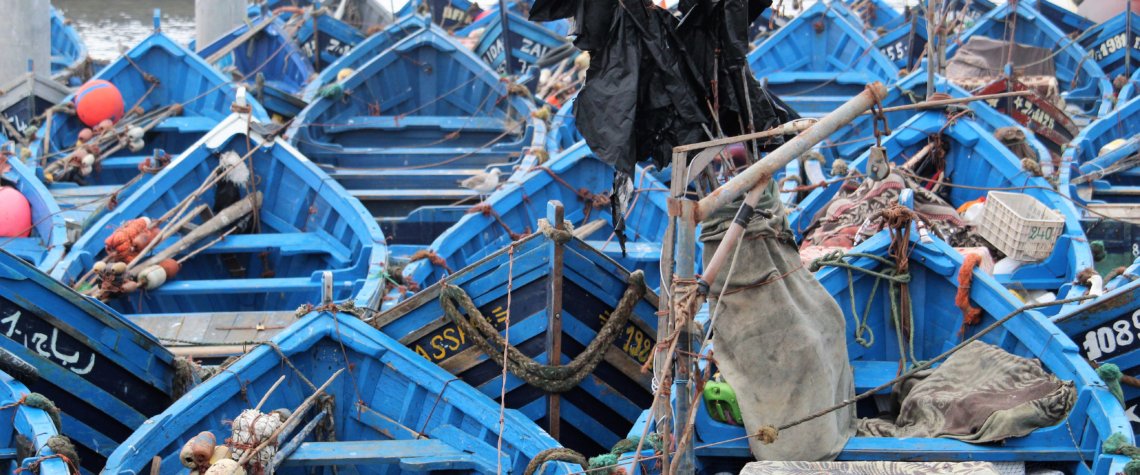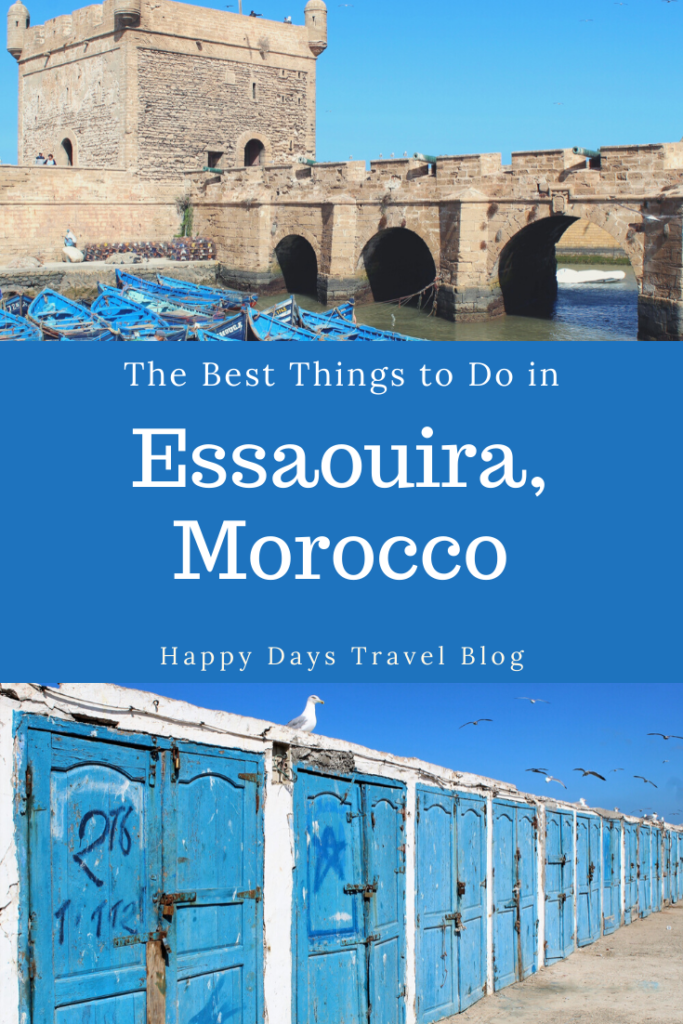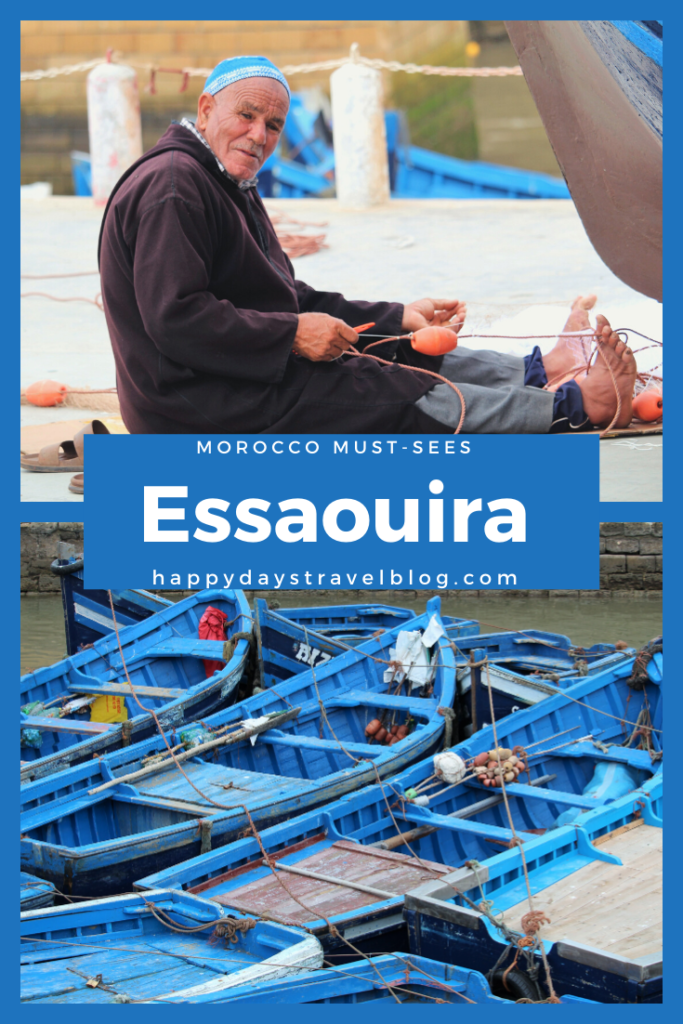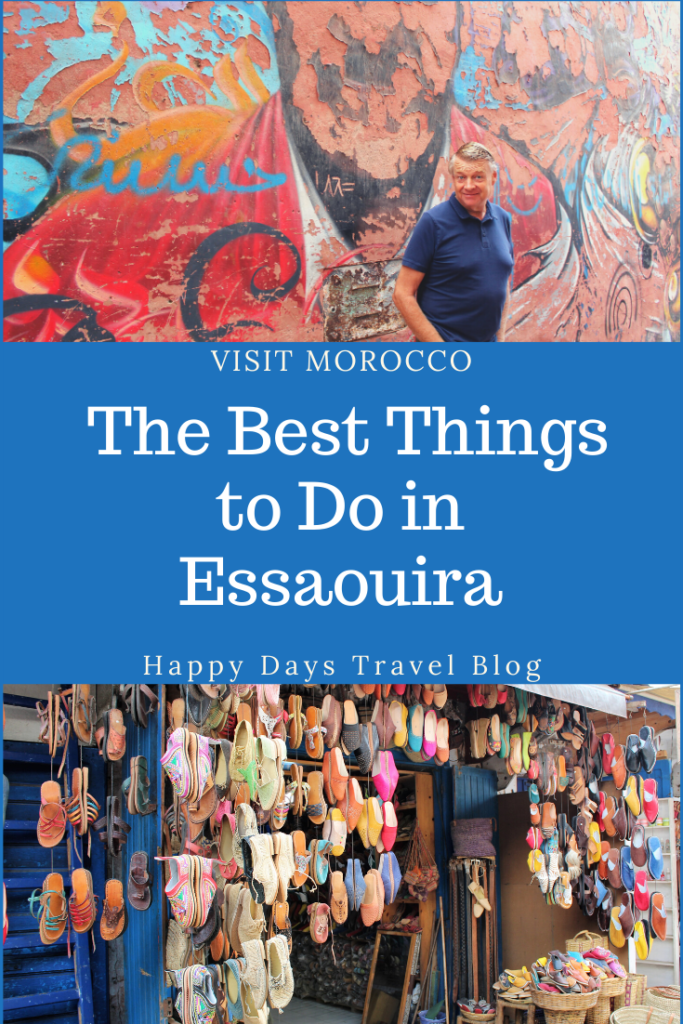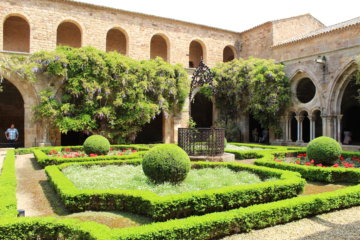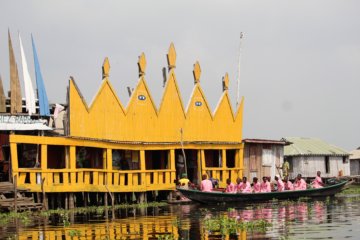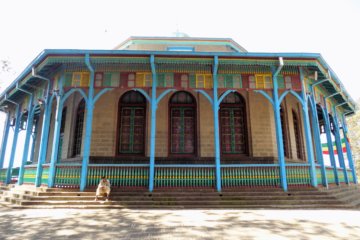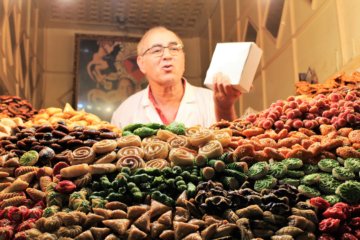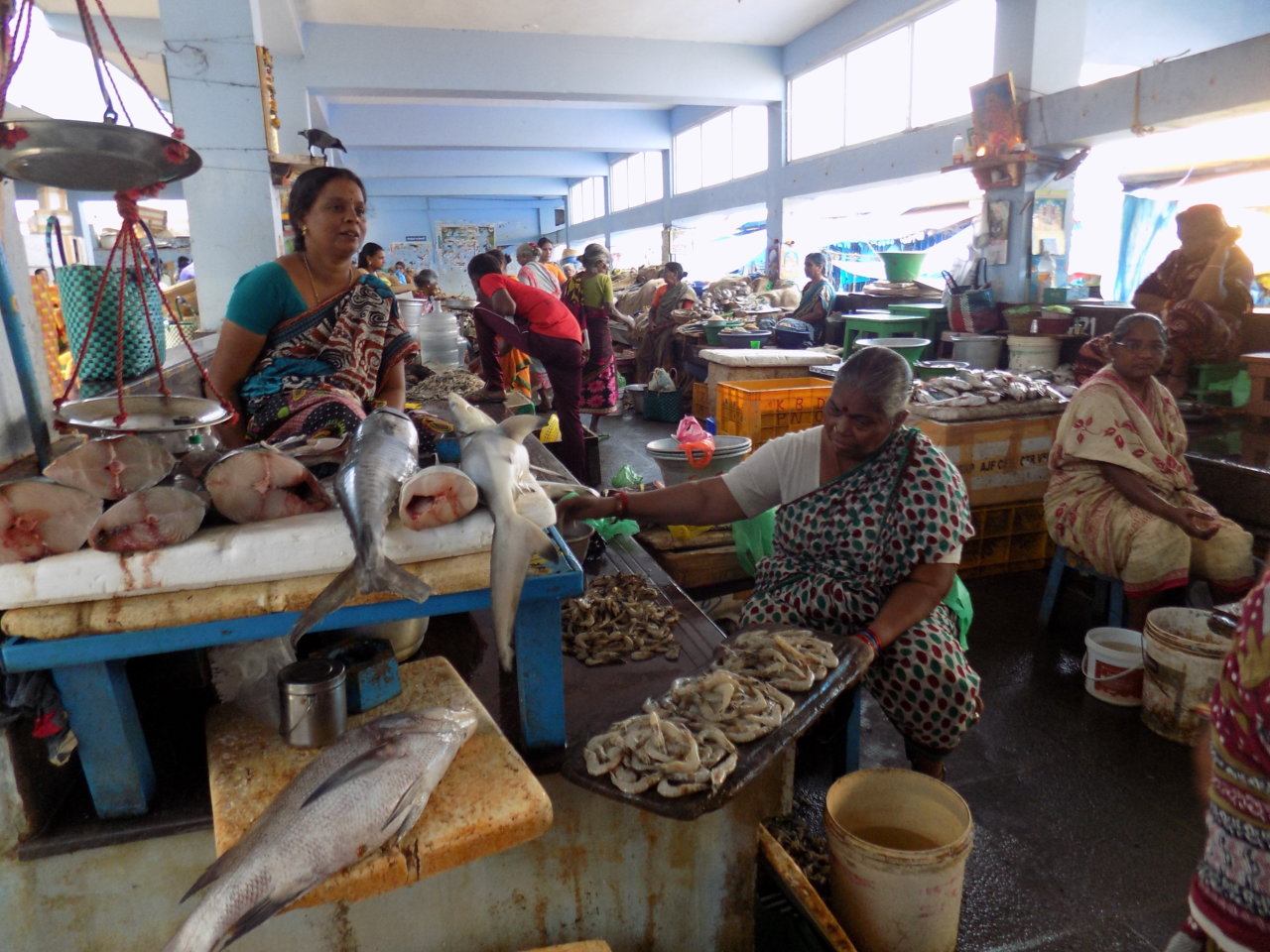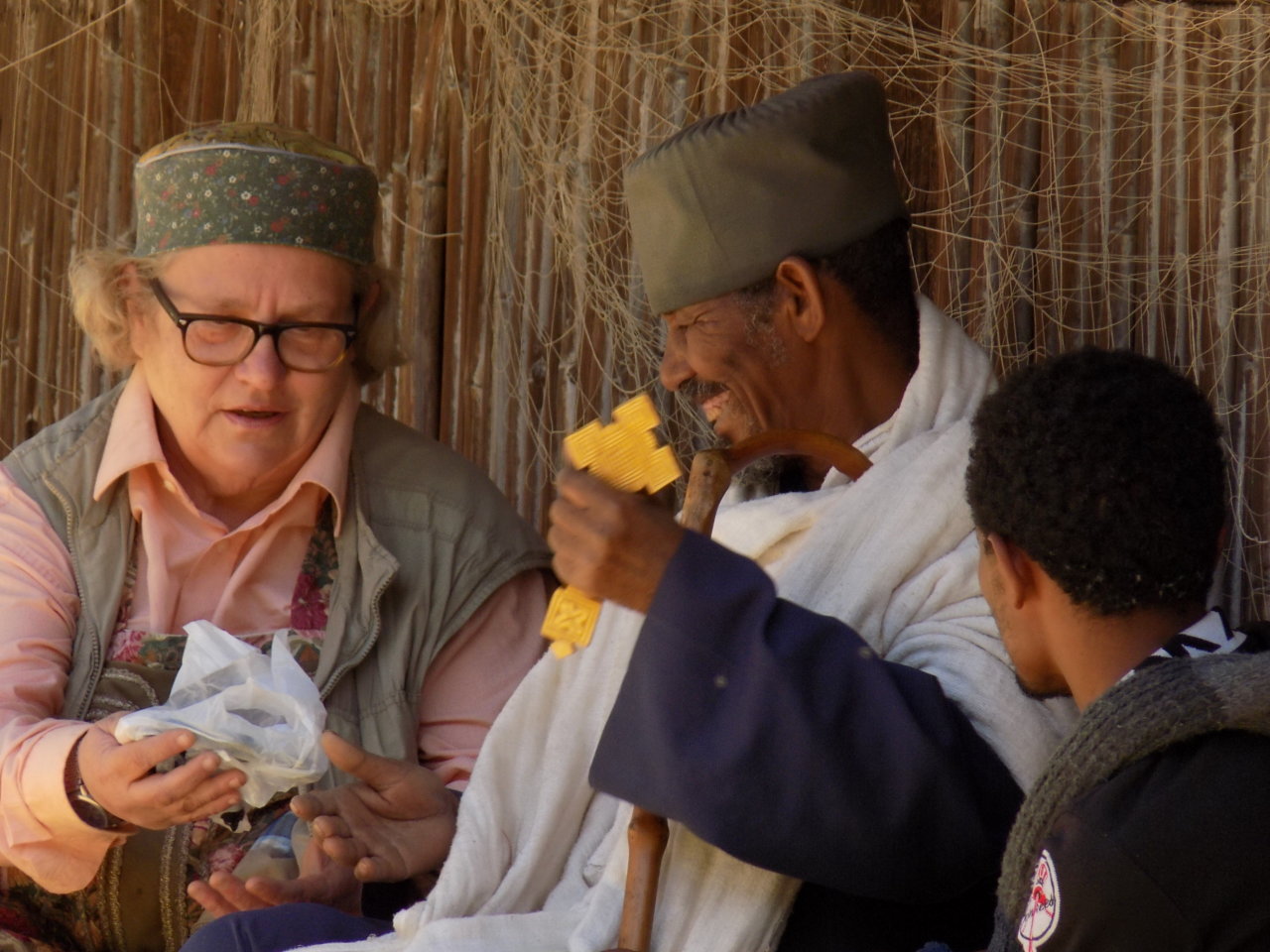The coastal town of Essaouira (pronounced essa-weera) was one of our favourite stops on our Intrepid tour of Morocco. We loved wandering the colourful streets, people watching from the pavement cafés, and feasting on the freshest fish and seafood. Read on for my ideas on the best things to do in Essaouira.
In this article
The History of Essaouira
Archaeological research shows that Essaouira has been inhabited since prehistoric times. Its bay is partially sheltered from strong ocean winds by the island of Mogador. This means that, for centuries, the town has been considered to be one of the best harbours on the Moroccan coast.
The Carthaginian navigator, Hanno, established a trading post here as early as the 5th century BC. In Roman times, Essaouira became known for dye production, using local shells to create the purple colour used in the togas worn by senators.
During the following centuries, the Portuguese, Spanish, Dutch, English, and French, all tried to take control of Essaouira with varying degrees of success. For much of the time, the port remained a centre for the export of sugar and molasses and was controlled by pirates.
In 1764, Sultan Sidi Mohammed ben Abdallah, also known as Mohammed III, installed himself in Essaouira and employed a French architect, Théodore Cornut, to create a modern city and fortress which combined European and Moroccan styles. His aim was to establish a harbour as close as possible to Marrakech and to cut off trade from Agadir in the south. He succeeded. Essaouira soon became Morocco’s principal port, a vital link for trade between Timbuktu and Europe. It was a place where the trade in gold, salt, ivory, and ostrich feathers was carefully monitored, taxed, and controlled by a garrison of 2000 imperial soldiers.
When the French established their protectorate in 1912, they diverted trade to Casablanca, Tangier, and Agadir. It wasn’t until Morocco gained its independence in 1956 that Essaouira regained some of its former glory.
Essaouira Today
Essaouira is a major fishing port with a very busy harbour and many of the town’s inhabitants making their living from the sea. It is also establishing itself as a tourist destination. Since the first hippies arrived here in the sixties, the town has attracted a steady flow of visitors. Originally, many of these were artists, musicians, and writers, drawn by the relaxed vibe, art galleries, and colourful boutiques and bars. Nowadays, windy Essaouira is also a popular destination for surfers, especially between April and November.
Whilst there are no real ‘wow’ sites in Essaouira, it’s the perfect place to wander around and enjoy relaxed lunches. We spent two nights and three days in the town and could happily have stayed longer.
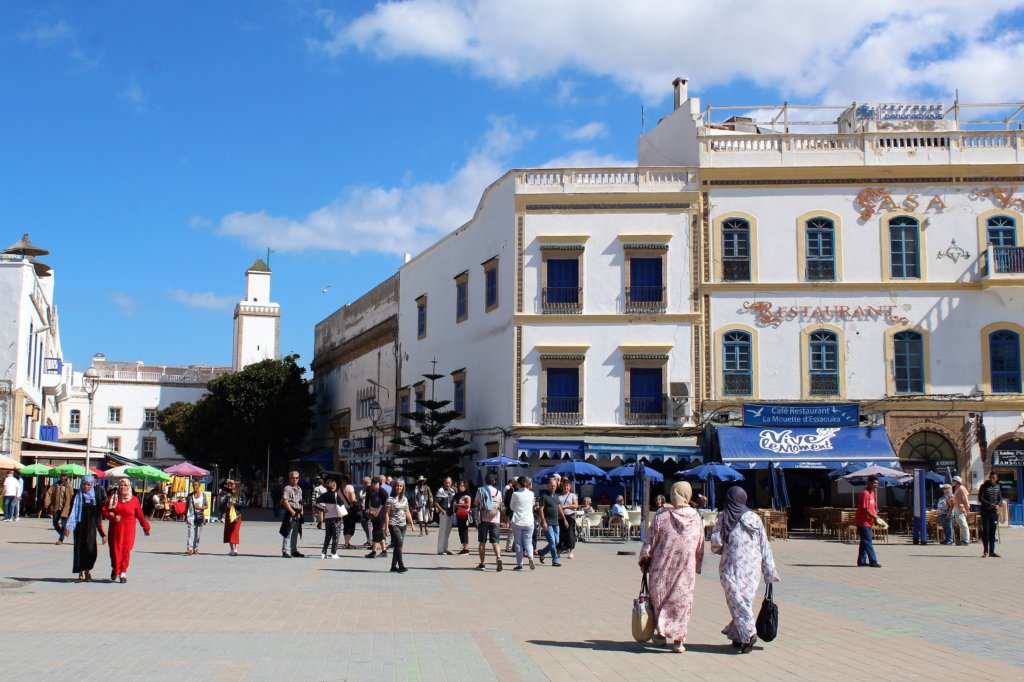
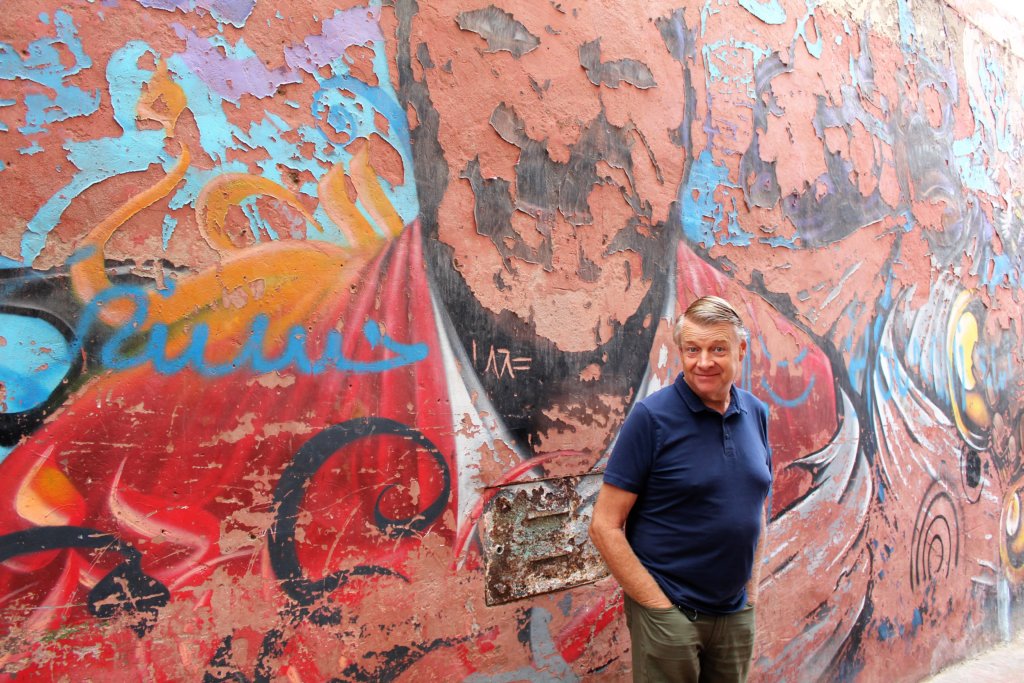
The Best Things to Do in Essaouira
Stay in a Riad Inside the Medina
Essaouira’s walled medina dates from the late 18th century. In 2001, it became a Unesco World Heritage Site due to the fact that it’s so well preserved. It’s an outstanding example of European military architecture in North Africa.
Spend time wandering through the medina’s narrow streets, pausing to admire the ornate doors and windows Morocco is so famous for. There are street vendors everywhere, selling everything from freshly harvested creamy walnuts (so delicious that I bought 2kg and have only just finished using them in my coffee cakes here in Tobago!) to gorgeous colourful handwoven rugs.
When you’re done with walking, find yourself a riad to spend a night or two. You’ll be right in the thick of the hustle and bustle of the town and yet, from the oasis of calm which is your inner courtyard, you would never know! We stayed in Riad Chakir Mogador, comfortable shabby chic accommodation with a delicious breakfast thrown in.
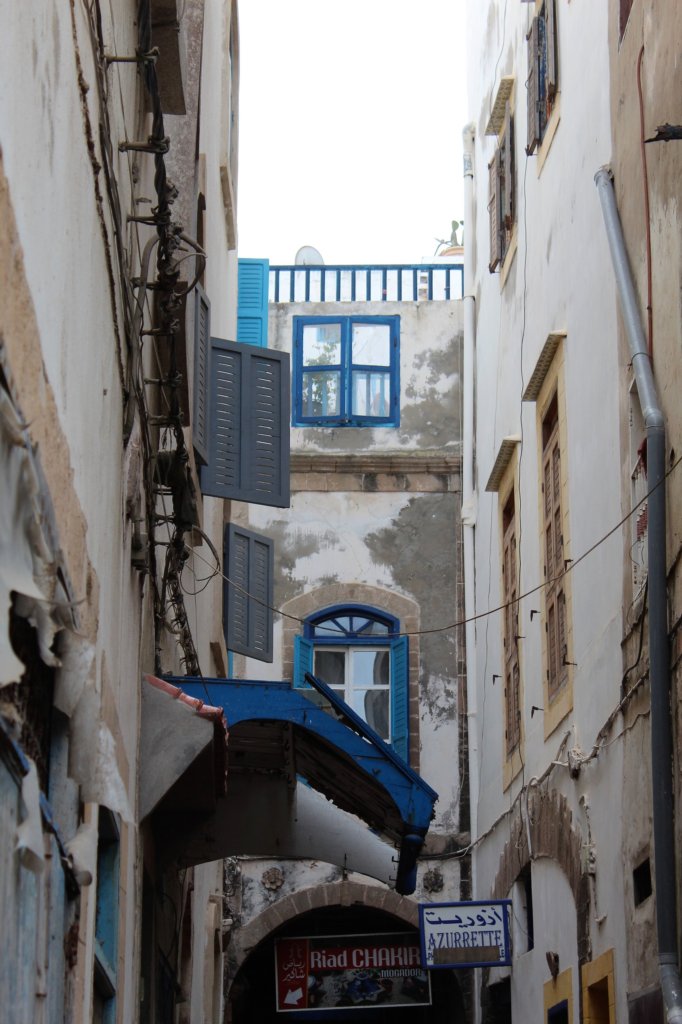
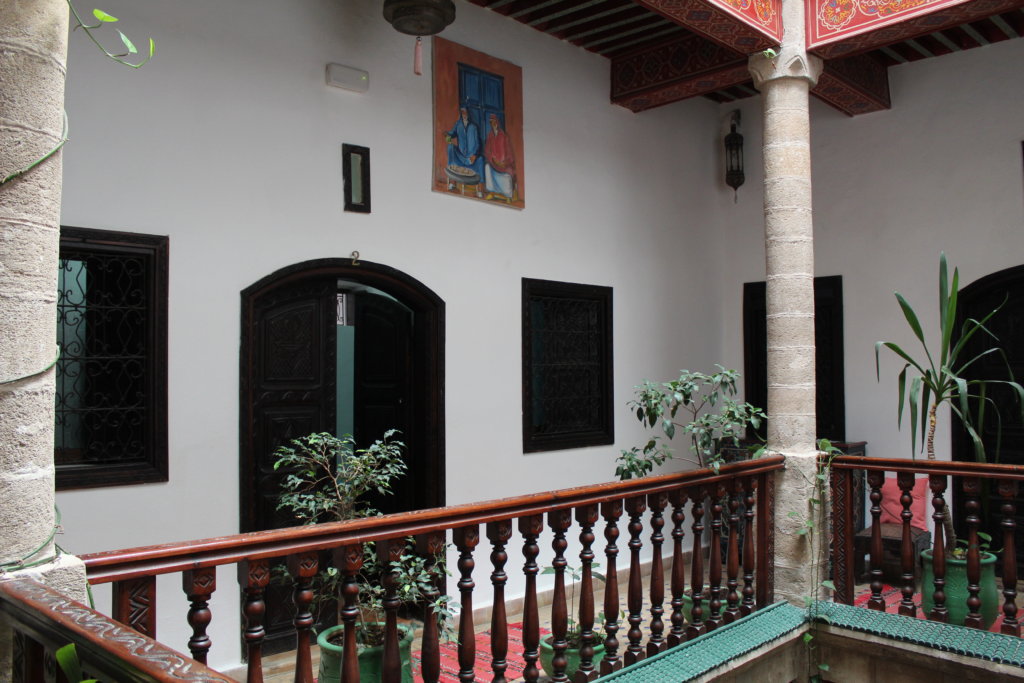
Spend Time at the Port
For me, one of the best things to do in Essaouira is to wander around the port. Try to ignore the sometimes unpleasant aroma of yesterday’s catch and, instead, enjoy the atmosphere created by local fishermen going about their business. It’s a colourful, noisy place. Small boats, invariably painted bright blue, owned by individuals, jostle for space amongst the larger trawlers. Countless seagulls, bigger than any I’ve ever seen, circle overhead drowning out any conversation with their raucous screeching. Wizened old men sit on the concrete floor mending their nets by hand. Porters pushing rickety hand barrows with dodgy wheels carry trays of iced fish between the dockside and local restaurants.
Twice a day, early in the morning and again at dusk, the fishermen land their catches. The hive of activity becomes even more intense as housewives compete with wholesalers and restaurateurs to secure their choice of fish. Stalls appear along the quayside with eye-catching displays to tempt the buyers. Many of these have a vast array of fish and seafood. Others, usually manned by one elderly lady, have only one fish to sell. These women jealously guard their wares and tenaciously hold out for the best price so that they can use their meagre profits to buy food to feed their family.
The port area is a photographer and artist’s dream – as confirmed by the number of both who are ever-present!
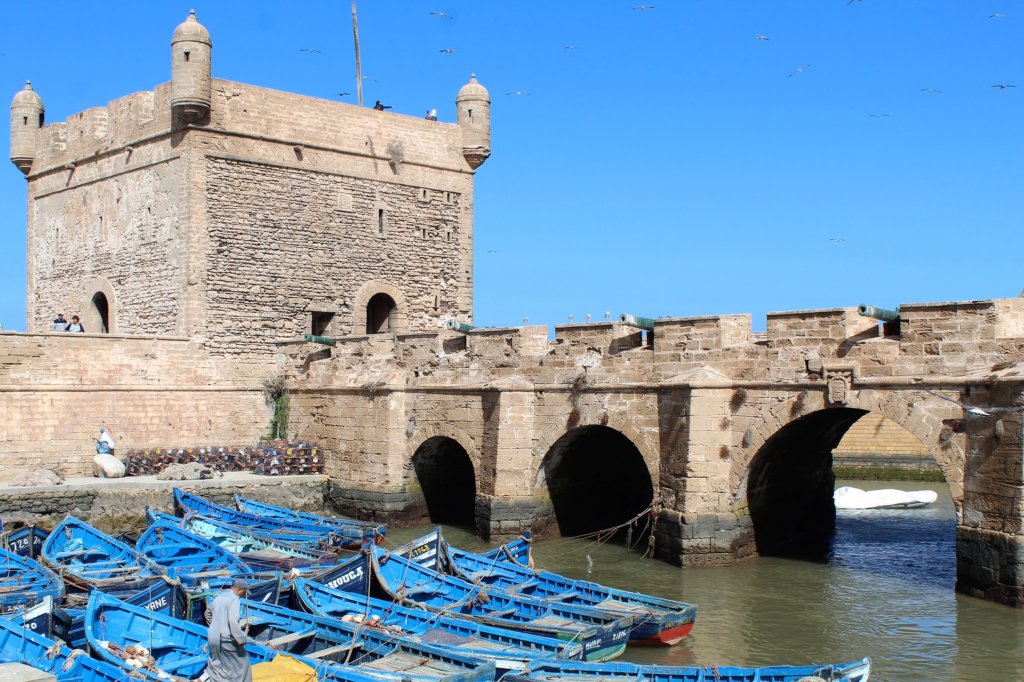
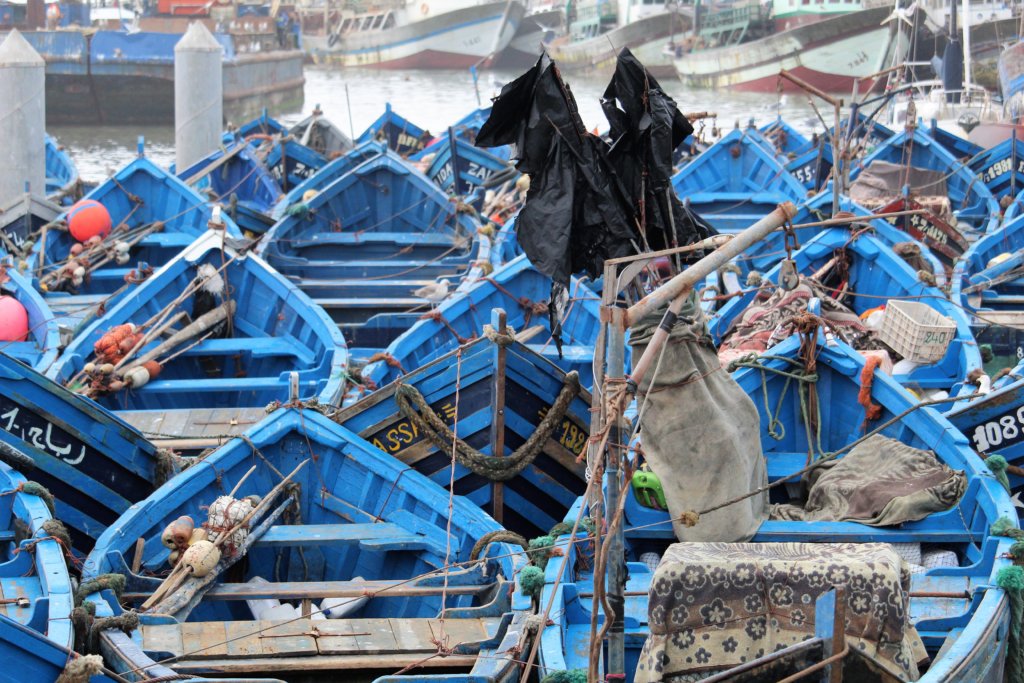
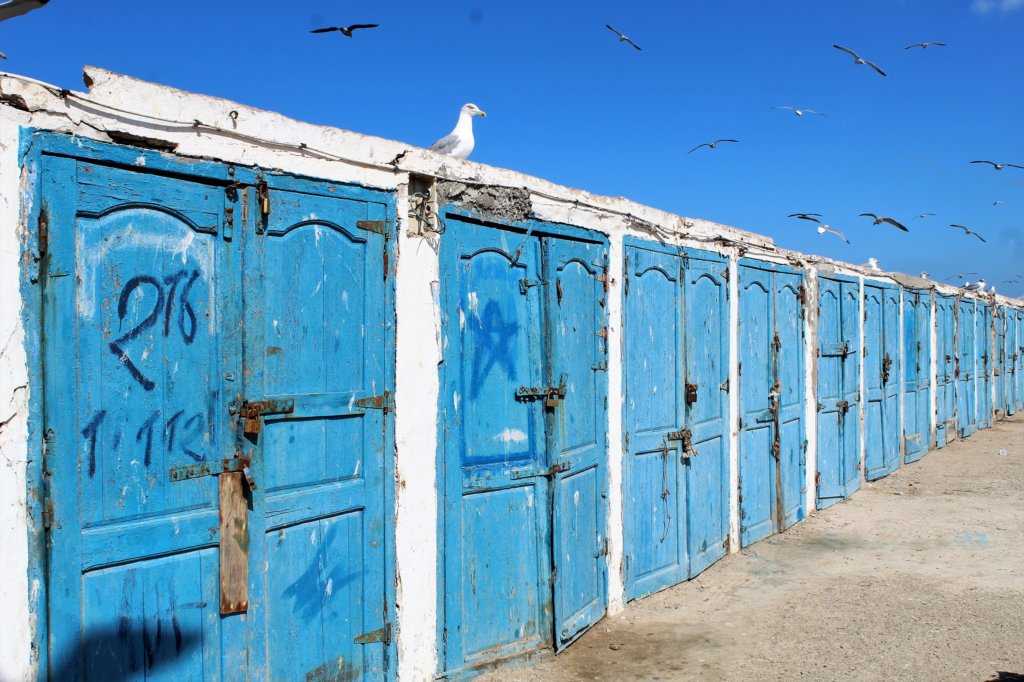
More Photos of the Port in Essaouira
Walk Around the Town’s Ramparts
Whilst the original ramparts are not all intact, it’s still possible to walk around most of them.
The recently renovated Skala de la Ville is the impressive bastion which protects the medina from the crashing Atlantic waves. We were there early in the morning and the sea mist made it very atmospheric.
Near the harbour, the Skala du Port is an impressive archway. You can pay a few dirham to go in and climb to the top for great views over the harbour and back towards the medina.
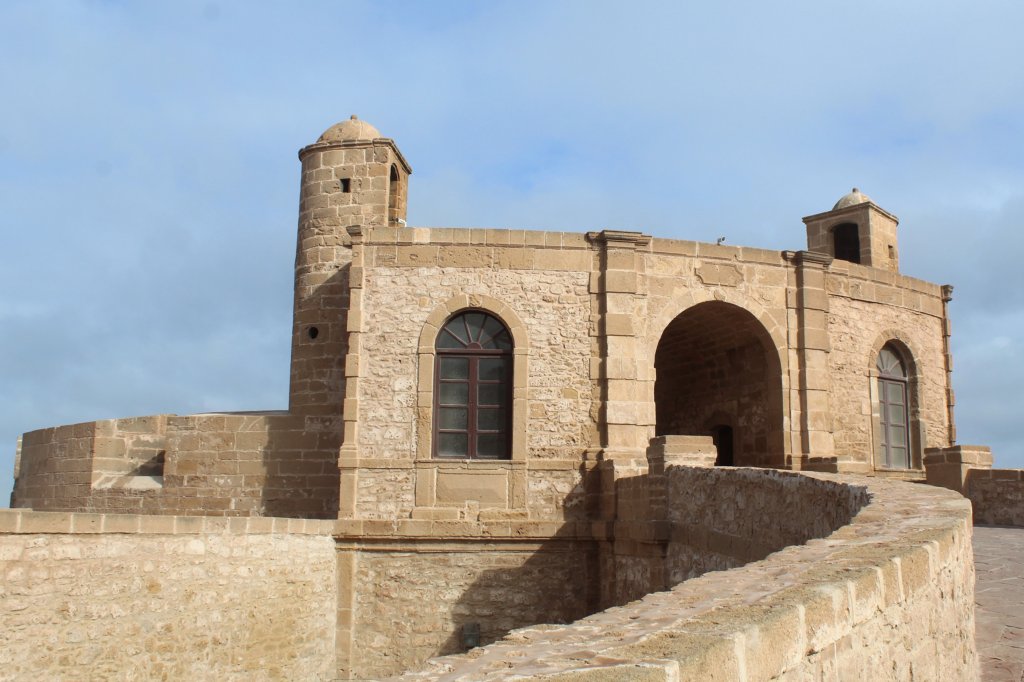
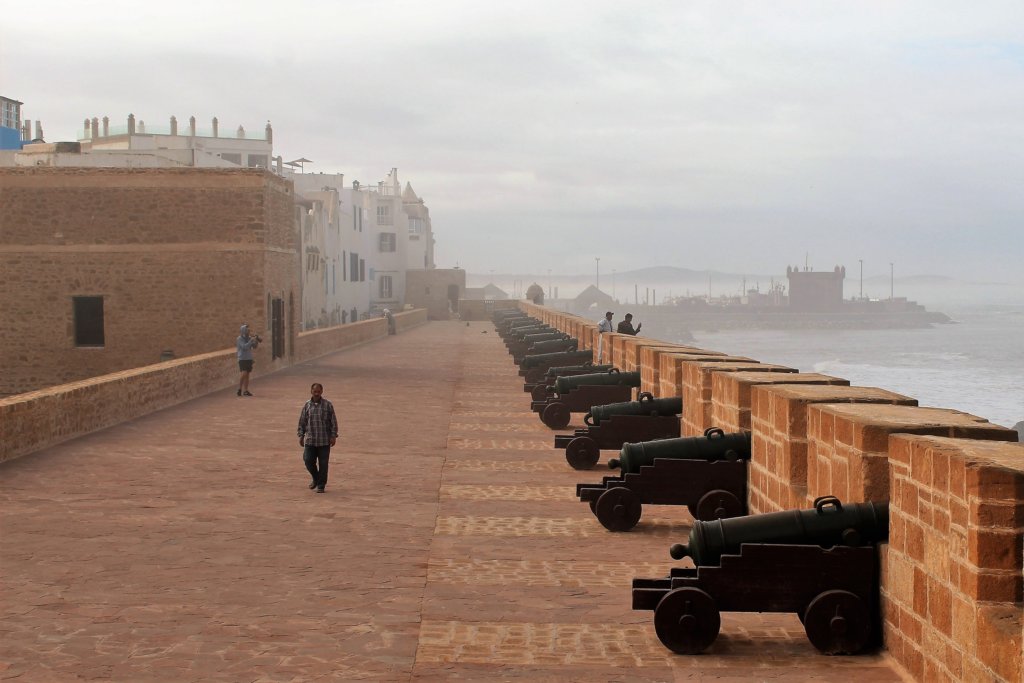
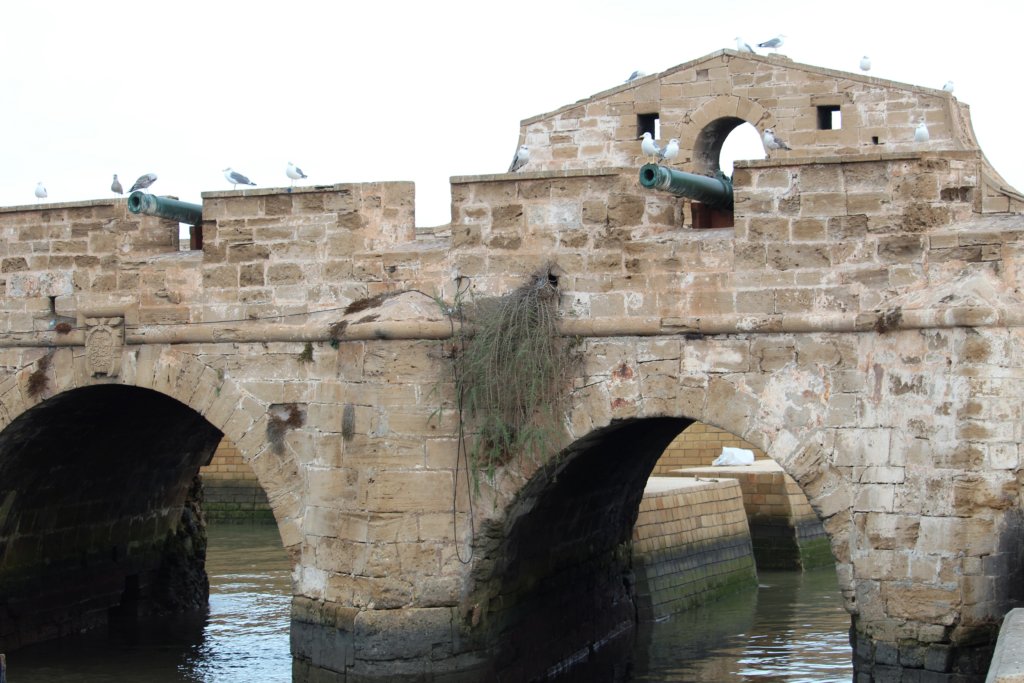
Buy Yourself Some Original Art
Essaouira has a flourishing art scene with many artists living and working in the town. You will often see painters set up in a pavement café or under the shade of an old tree trying to capture the essence of the scene in front of them. There are a number of galleries that sell their work. You should also look out for local calligraphy. Some of it is absolutely beautiful.
Eat Lots of Fish and Seafood
One of the iconic things to do in Essaouira is to choose your fish from one of the stalls near the port, have it cooked for you in a kitchen behind the stall, and eat it, served with salad and bread, sitting at one of the benches nearby. Unfortunately, most of these fish grill stands use increasingly hard-sell tactics to get you to choose their establishment and then rip you off when it comes to paying the bill. If you do decide to eat here, make sure you agree a price before you sit down.
It’s much more preferable, though, to go to a restaurant inside the medina. You can still go and buy your own fish, straight off the boat if you want. You then take it somewhere reputable to get it cooked and served to you in a comfortable setting. Many restaurants offer this service. Ask your riad owner to recommend one to you.
Our guide, Hamid, did this for us. We gave him the princely sum of 60 dirham each to go and buy us a selection of fish and seafood. He then arranged to meet us at a restaurant where his purchases were cooked for us. The platters of amazing barbecued fish just kept on coming! We enjoyed sole, sea bream, sardines, another unidentified local fish, huge king prawns, shrimps, and calamari! They were served with piles of warm bread straight from the oven and fresh, zingy salads. To follow, we had juicy segments of fresh oranges. It was a truly memorable lunch!
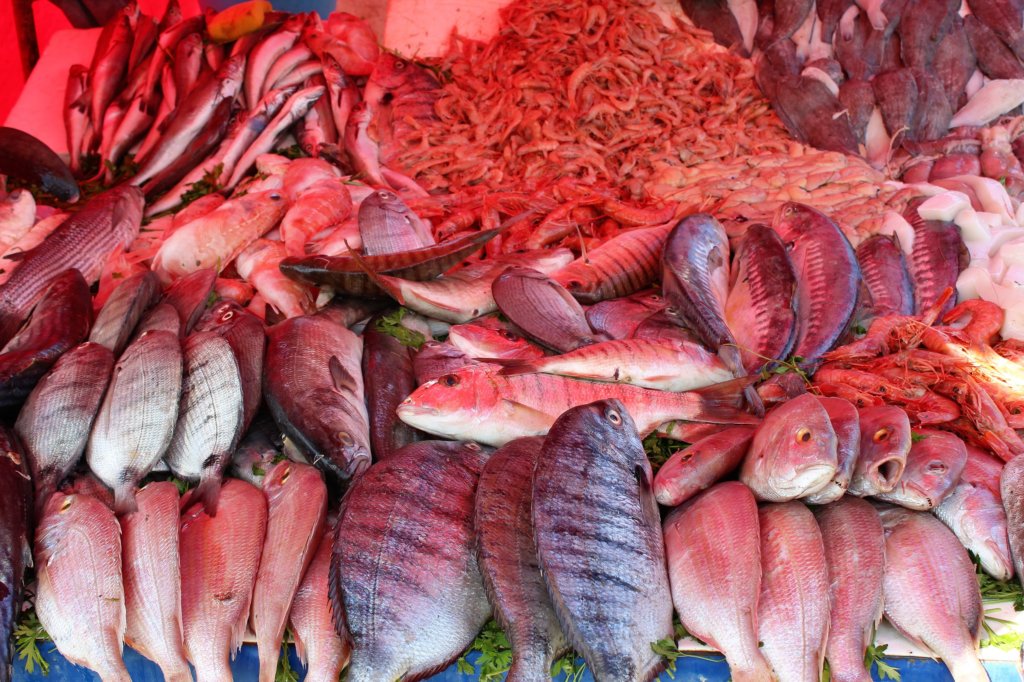
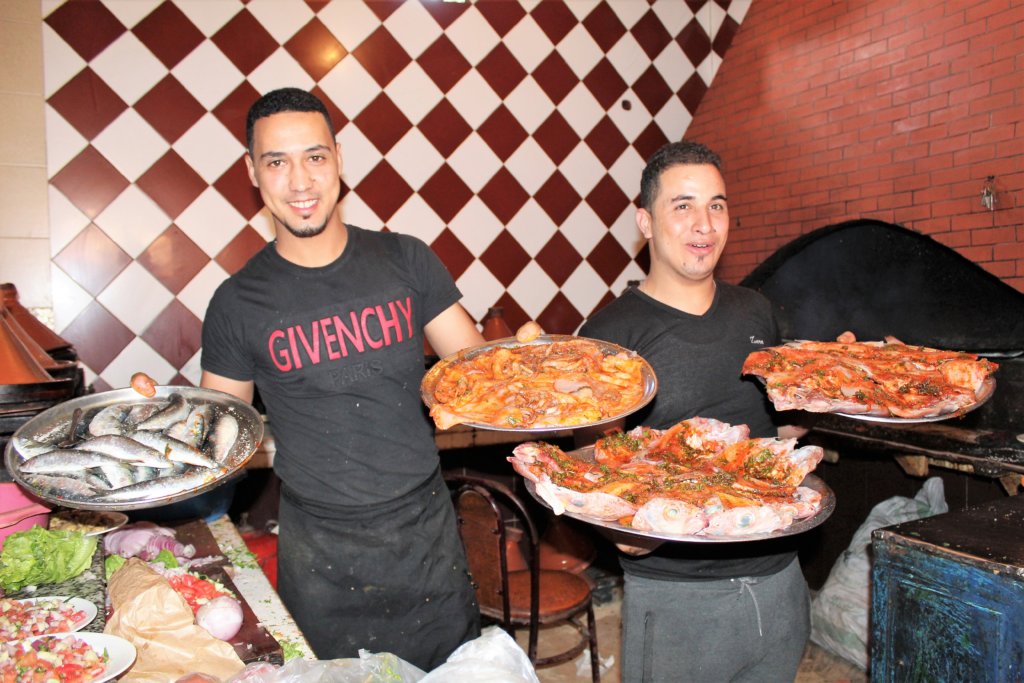
Shop in the Souqs
Essaouira is a great place to shop for souvenirs to take home. There is a plethora of small colourful shops selling jewellery, leather goods, spices, wooden objects, and so much more. Obviously, some of what is on sale is imported rubbish, but a lot of it is hand-crafted locally. You can find some beautiful items.
Our local guide, Rashida, took us to a silver jewellery cooperative. All the ladies who worked there were deaf. Their work was exquisite! I bought some intricate filigree earrings and a pendant for our nieces.
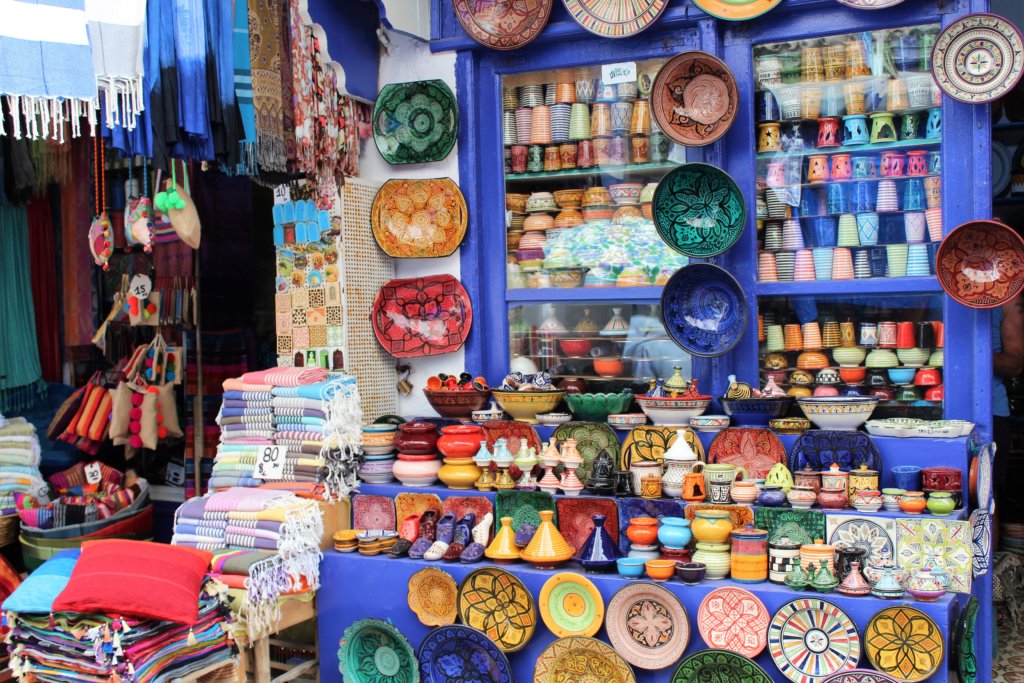
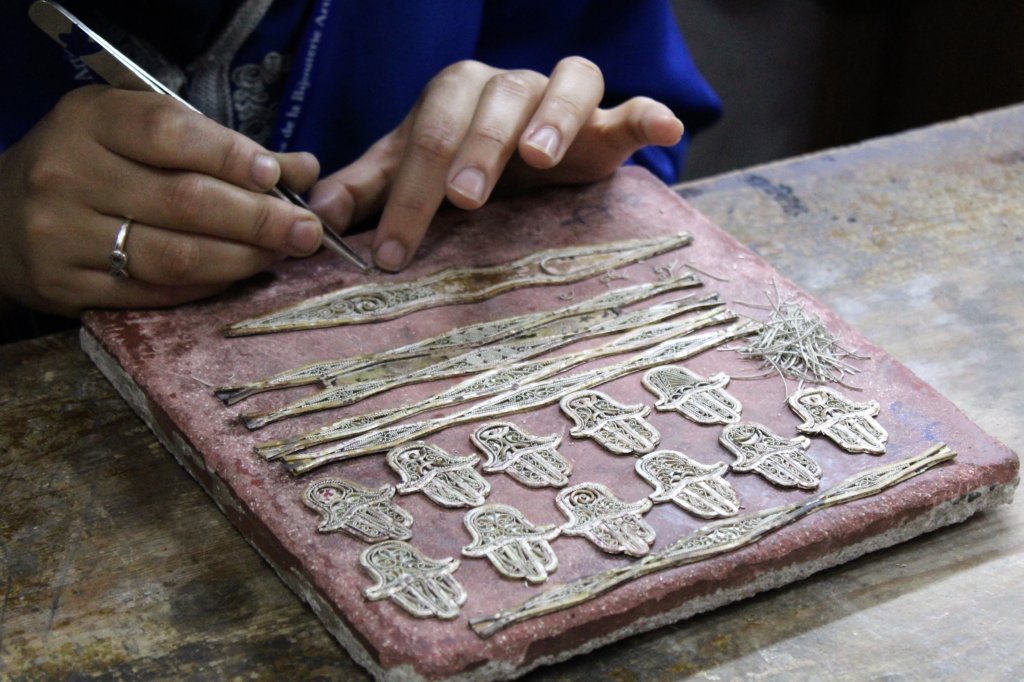
Go to the Beach
The strong winds and difficult currents make swimming off Essaouira’s beach a bit risky, but the wide stretch of sand is perfect for walking. Locals use the beach for football matches. The standard is pretty good. They don’t mind if you want to stand and watch – you might even get invited to join in. At weekends, it’s possible to ride camels or horses up and down the beach.
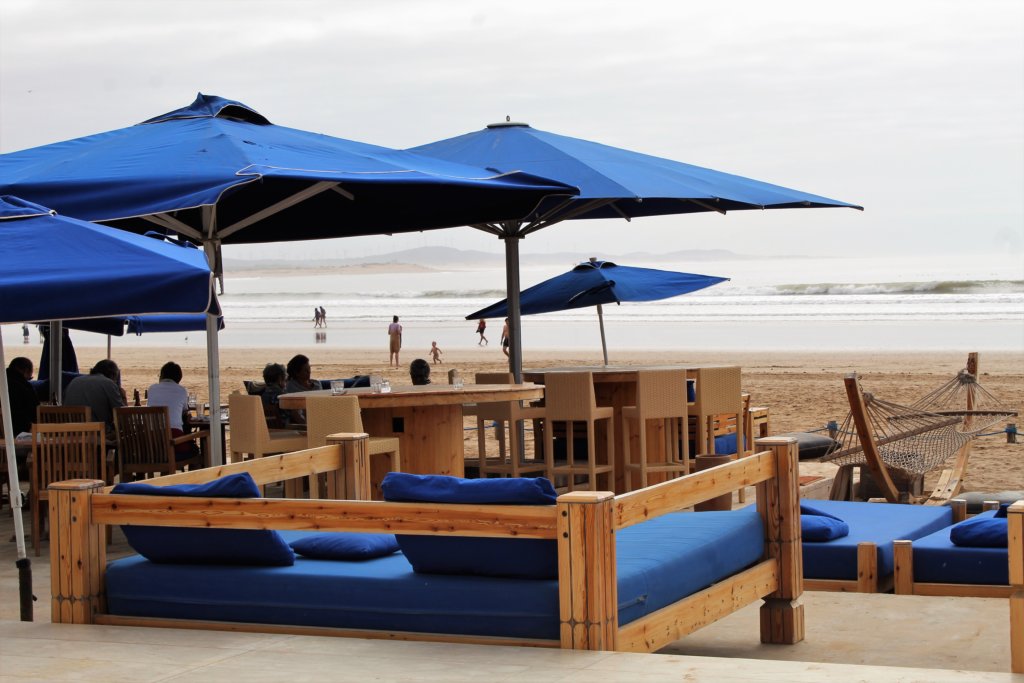
Take a Cookery Class
Learning the secrets of tajines, couscous and pastilla is one of the best things to do in Essaouira. L’Atelier Madada offers courses in French and English. Check out their website here.
Learn About Argan Oil
As we were heading to Essaouira, Omar, our driver, suddenly pulled over and gesticulated wildly to the other side of the road. We all looked in the direction he was pointing and were delighted to see one of the iconic Moroccan sights. There were goats climbing trees! We had read about them and had asked our guide if we might see them. Hamid had been non-committal, not wanting to make a promise he couldn’t keep. But here they were! Needless to say, we were all out of the minibus in a flash to take photos.
The goats in this part of Morocco feed on the fruit of the Argania Spinosa or argan tree. The sticky pulp makes up a large part of their diet and they climb up to 30 feet into the trees to get their fix. The goats eat the whole fruit, even the indigestible nut in the centre. When they spit these out or excrete them, local Berber women collect them up to make precious argan oil.
We visited the Marjana Cooperative to learn about the labour-intensive, time-consuming process. The nuts are cracked and sorted by hand before being toasted and then pressed between two round stones to extract the oil. It takes 40kg of nuts and around 18 hours of manual work to produce just one litre of oil. No wonder, then, that it’s very expensive. 50 millilitres of 100% pure argan oil for culinary use will cost you around US$50!
Berbers have been using argan oil for hundreds of years, both in their cooking and, when mixed with ground almonds and honey, as an aphrodisiac. In recent times, it has become a fashionable ingredient in hip restaurants around the world. It is used to give a nutty flavour to salad dressings. It has also been found to be rich in vitamin E, making it a perfect addition to anti-wrinkle creams and hair care products. All of these items can be bought in the shop attached to the Marjana Cooperative.
Take a Tour
Whilst it’s perfectly possible to explore Essaouira independently, it’s a good idea to go on a tour with a local guide. You will learn so much and really get under the skin of the place. I can particularly recommend this tour.
Check out these other ideas:
READ MY COMPLETE MOROCCO TRAVEL GUIDE
Further Reading About Morocco
Check out my Morocco colouring books!
Unlike most colouring books on the market, mine, suitable for both adults and older children, are full of line images created from photos I have taken on my travels. This means that they are highly detailed. They are not line drawings where you can colour between every line. The pictures invite you to be creative. Apply a colour wash with watercolour. Use coloured pencils to create texture. Blend colours together. Add detail with a fine ink pen. The choice is yours! Create your own work of art! When you’re happy, remove it from the book. Stick it on the fridge as a reminder of a place you’ve already been to or somewhere that’s on your bucket list. You could even get it framed. Display it on the wall for people to admire.
Here is a selection:
If you like what you’ve read, PIN IT!!
If you’re travelling soon, please use these links!
Are you travelling soon? Use these links when making your bookings. These are the companies we use. It won’t cost you any extra, but we will earn a few pennies to help keep Happy Days Travel Blog going. Thank you!!
- Book your travel insurance with World Nomads (Never leave home without protecting yourself, your trip and your belongings!)
- Book your flight with Skyscanner
- Book your accommodation with Booking.com
- Book a tour with Tour Radar or Intrepid Travel
- Book city tours and activities with Get Your Guide
Disclosure: This post contains affiliate links. If you click through for more information, or to make a purchase, it may result in a small commission coming my way. Please note that there is no extra cost to you associated with this. Thank you so much for supporting my site.
Join our mailing list

Sign up to receive our monthly newsletter. Keep up with what we're doing and be the first to receive special offers and insider tips.

